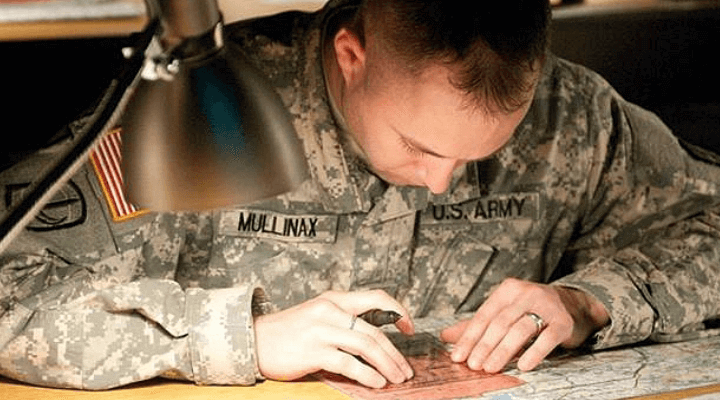When talking about using the GI Bill after getting out, most veterans’ first thought goes to attending a college or university to get a four-year bachelor’s degree. However, we know that going the college route is not for everyone.
- One, some veterans are just not college material and would struggle to get through a four-year program, if they made it through at all.
- Two, many veterans already have an established family by the time they get out and they want to get trained in something as soon as possible and start earning to support their family without having to go to school for four years first.
- Three, they would like a rewarding and fulfilling career working with their hands in one of many skilled trades.
For these individuals, the non-degree route may be the best option. Not only does one get trained in a needed skill, but into the field working (and earning a living) in as little as two years (or less). And earn a good living they do.
According to the Bureau of Labor Statistics, on average electricians earn $26.01 per hour. The job forecast through 2026 shows a growth at 9%, which translates into needing 59,600 new electricians by the end of the forecast period. Another good trade is carpentry. They make on average $21.71 per hour, and also have 8% growth with a need for 81,800 by 2026.
Types of Training
Depending on the type of trade or vocational skill, there are several ways to get to the same end goal:
- Attending on campus classes at a vocational or trade school.
- Taking a mix of online and on-campus courses.
- Going through an On-the-Job Training (OJT)/Apprenticeship training program.
Vocational or Trade School
Learning a skill or trade at these schools is similar to the traditional way of learning, but with a twist. While there are classes to sit through, there are also hands-on portions or labs where students get to practice what they learned in class. In a mix of classes, the classroom portion can sometimes be taken online with the hands-on or labs taken on campus.
OJT/Apprenticeship
With this type of training, there is a more hands-on focus and less classroom. In most cases, the outcome is the same, just a different route to get there.
Using the GI Bill
If using the GI Bill, the amount earned each month depends on the type of GI Bill and method of training. The table below shows the specifics in a snapshot view for the three most popular GI Bills.
| Type of GI Bill | Vocational/Trade School | OJT/
Apprenticeship
|
OJT/
Apprenticeship
|
OJT/
Apprenticeship
|
OJT/
Apprenticeship
|
OJT/
Apprenticeship
|
| First Six Months | Second Six Months | Third Six Months | Fourth Six Months | Remainder of Training | ||
| Post 9/11* | Public/Private
100%/$23,671.94 |
100% MHA | 80% MHA | 60% MHA | 40% MHA | 20% MHA |
| MGIB-AD** | $1,928 | $1,446 | $1,060.40 | N/A | N/A | $674.80 |
| MGIB-SR*** | $375 | $281.25 | $206.25 | N/A | N/A | $131.25 |
* Post 9/11 GI Bill
- Assuming at the 100% tier level. The private school amount is a per year maximum amount.
- Monthly Housing Allowance (MHA) is calculated on full-time student status at the 100% tier and the zip code of the school. It is paid at the E-5-with-dependents rate based on the BAH Calculator.
- Book Stipend is paid at the rate of $83 per month assuming full-time student status at the 100% tier and is subject to a $1,000 per year cap.
** MGIB-AD
- Rates quoted are based on having at least three years of qualifying service.
- The OJT/Apprenticeship program only covers the first and second six-month periods, along with the remainder of the program.
***MGIB-SR
- This entitlement must be used while still serving and does not have any residual benefit remaining after getting out.
- The OJT/Apprenticeship program only covers the first and second six-month periods, along with the remainder of the program.
As shown in the table, the amount paid when in an OJT/Apprenticeship declines with each six-month period in the program. However, the veteran earns approximately the same amount each month (and in some cases more) because as the percentage drops, the employer pays the student more so in the end it comes out to about the same monthly amount.
GI Bill Reimbursement
A little-known feature of the GI Bill(s) can help defray the cost of taking an exam to get a license or certification. For veterans with GI Bill entitlement left, they pay for the test(s) up-front, out-of-pocket, and then request reimbursement from the VA by submitting VA Form 22-0803.
The VA reimburses (up to $2,000) for common test-related costs, including administrative, registration and the actual exam fee. Then the VA reduces the veteran’s remaining GI Bill entitlement based on the amount reimbursed.
For the Post 9/11 GI Bill, reimbursements of $1,974.91 or less reduce entitlement by one month regardless of how small the reimbursement might be.
For the MGIBs, entitlement is reduced proportionate to the cost of the reimbursement compared to the monthly GI Bill rate. For example, with a MGIB-AD monthly full-time student rate of $1,928, a reimbursement cost of $964 would reduce entitlement by one-half month. However, under the MGIB-SR with a monthly rate of $375, that same reimbursement would reduce entitlement by 2 months and 17 days.
Using your GI Bill for non-traditional training at a vocational trade school or through an OJT/apprenticeship program can be just as effective as spending four-years in school. And it gets you into a job up to twice as fast.




